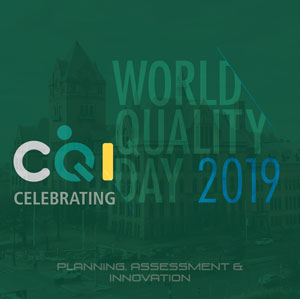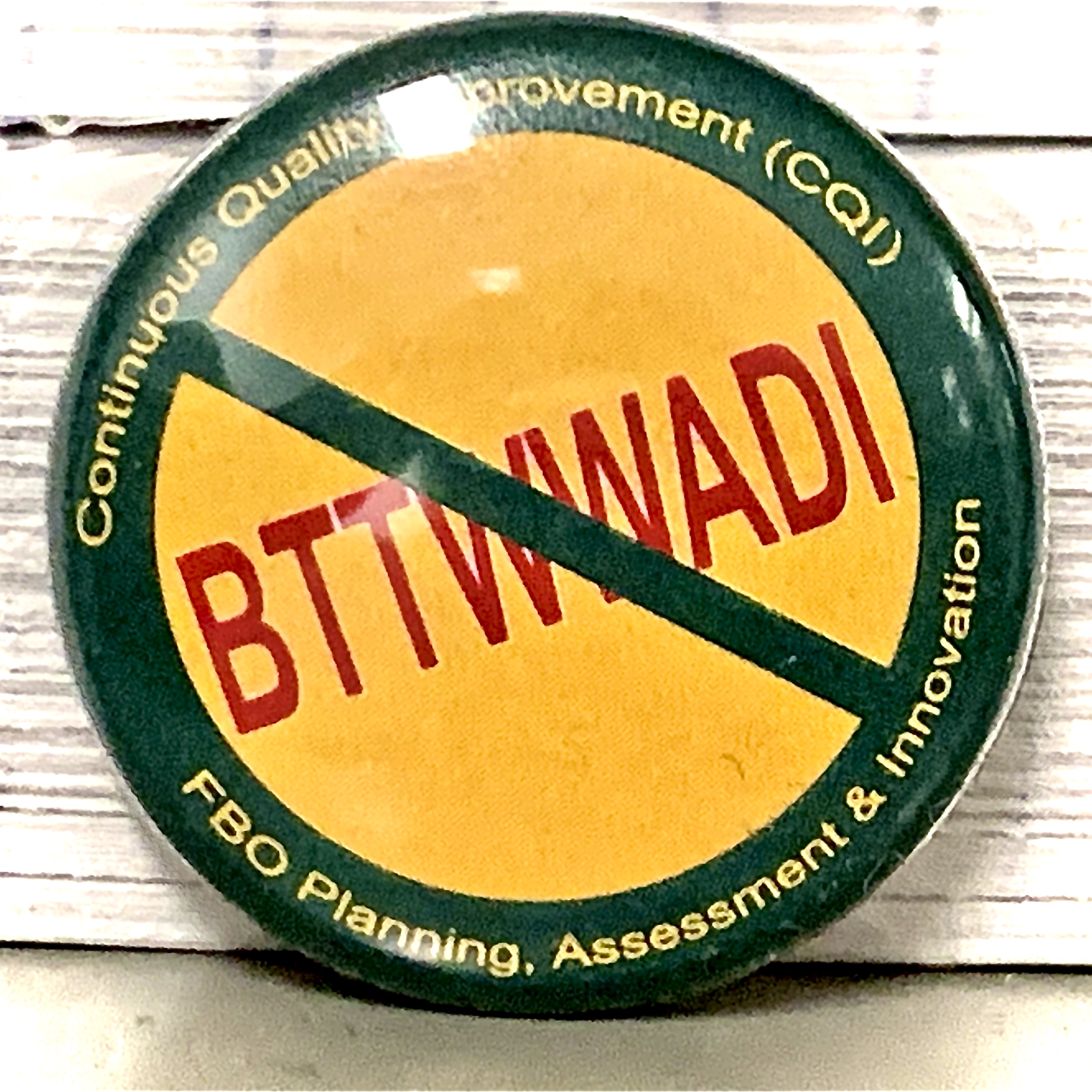CQI Communicator - Q3 2019

Welcome to The CQI Communicator, a quarterly newsletter that brings you the latest in
continuous quality improvement, project management, and tips/tricks to help you optimize your team's effectiveness,
courtesy of your partners in Planning, Assessment & Innovation (PAI). Enjoy!
Nov 14 is World Quality Day: Celebrating with Games, Goodies, and Huge Launches!
 The Office of Planning, Assessment & Innovation announces the celebration of World Quality Day on Thursday, Nov 14. In observation of all CQI (continuous quality improvement) efforts occurring in FBO, across campus, and around the globe, PAI team members will be in the Atrium of AAB at 5700 Cass (at Palmer) from 9 am1 pm, greeting all visitors. Come join us for…
The Office of Planning, Assessment & Innovation announces the celebration of World Quality Day on Thursday, Nov 14. In observation of all CQI (continuous quality improvement) efforts occurring in FBO, across campus, and around the globe, PAI team members will be in the Atrium of AAB at 5700 Cass (at Palmer) from 9 am1 pm, greeting all visitors. Come join us for…
- The CQI Scavenger Hunt for prize drawings!
- The launch of The CQI Connection Community of Practice!
(toolkit, webinar, peer support, multimedia librarythe works!) - The unveiling of our new interactive CQI Success Dashboard!
- Balloons! Coffee! Snacks! Success stories!…and much more!
See our site news announcement and WSU Event Calendar page for more info.
Winners of Summer CQI Activity Challenge
We again want to congratulate our CQI Summer Crossword winners:
- Valerie Kreher Buyer II, Procurement & Strategic Sourcing
- Umme Aiman Mirza College Work-Study, HR Client Services
- Bianca Ransom Office Services Clerk II, Facilities Planning & Management
You can see photos of all our winners in our CQI Activity Challenge Photo Gallery.
Join the No B.T.T.W.W.A.D.I. Club
We know what you're thinking"What the heck is BTTWWADI?"...
You've absolutely seen or heard it before, just about everywhere you goand it drives you crazy! See if you recognize any portion of this scenario...
- The Workshop Group holds regular workshops and collects paper attendance sheets to track participation. Attendees sign these sheets upon entry.
- After the workshop, a member of the Workshop Group then proceeds to scan every attendance list to an email attachment; saves the scanned attachment to their shared network drive folder; files the email into an email folder....and then keys the information into a spreadsheet "so that there is an electronic copy of the information."
- ....AND then also files the paper attendance sheet into a file cabinet.
 One day during their busiest season, they have to cancel an entire week's worth of workshops because the printer/scanner has broken, the server holding their shared network folder has run out of space, and their file cabinet has broken and spilled all of its contents into the office, leaving it in total disarray. Their business has come to a screeching halt! They call IT to fix the technical issues; facilities to help with the broken file cabinet; and orders a new, much larger filing cabinet. Their newest intern gets the dubious honor of having to pick and sort through all the spilled filing, and asks her mentor, "Why do we keep all this anyway when we've got redundant copies of all this info scanned into multiple storage locations and in a spreadsheet?" Her mentor answers, "Because that's the way we've always done it"otherwise known as "BTTWWADI":
One day during their busiest season, they have to cancel an entire week's worth of workshops because the printer/scanner has broken, the server holding their shared network folder has run out of space, and their file cabinet has broken and spilled all of its contents into the office, leaving it in total disarray. Their business has come to a screeching halt! They call IT to fix the technical issues; facilities to help with the broken file cabinet; and orders a new, much larger filing cabinet. Their newest intern gets the dubious honor of having to pick and sort through all the spilled filing, and asks her mentor, "Why do we keep all this anyway when we've got redundant copies of all this info scanned into multiple storage locations and in a spreadsheet?" Her mentor answers, "Because that's the way we've always done it"otherwise known as "BTTWWADI":
Because That's The Way We've Always Done It
We're recognizing those highly-engaged individuals working together with us to solve the toughest process improvement problems by awarding this pin that signifies their induction into the No BTTWWADI Club. These folks are showing outstanding commitment to making things work better here at Wayne State to improve the student experience and ultimately, student success outcomes.
Q-Tip: Get to the Root with 5 Whys
 When confronted with a problem, have you ever stopped and asked "why" five times? If you do not ask the right questions, you will never get the right answers. The Five Whys is a simple question asking technique that explores the cause-and-effect relationships underlying problems. You may ask, "Why 5 times?" Five is a good rule of thumb. By asking "why" five times, you can peel back the layers of symptoms that hide the real problem. For every effect, there is a cause. By repeating "why" five times, the nature of the problem, as well as its solution, becomes clear.
When confronted with a problem, have you ever stopped and asked "why" five times? If you do not ask the right questions, you will never get the right answers. The Five Whys is a simple question asking technique that explores the cause-and-effect relationships underlying problems. You may ask, "Why 5 times?" Five is a good rule of thumb. By asking "why" five times, you can peel back the layers of symptoms that hide the real problem. For every effect, there is a cause. By repeating "why" five times, the nature of the problem, as well as its solution, becomes clear.
Click this graphic scenario for an example of using the 5 Whys technique.
Watch this helpful video to learn more about using this technique.
###
Until next issue!